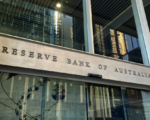The U.S. economy has made a significant step toward achieving the elusive soft landing, following a robust September jobs report that exceeded expectations. The report suggests the Federal Reserve may have a clearer path to stabilizing inflation while maintaining economic growth without triggering a recession.
The September jobs data, showing a 254,000 increase in nonfarm payrolls, far exceeded the Dow Jones consensus of 150,000, bolstering confidence in the economy’s resilience. This surge, which follows upward revisions in August, marks a departure from the trend of slowing job growth seen since April and quells fears of a broader economic downturn.
Fed’s Strategy Moving Forward
With this strong jobs report, the possibility of the Fed implementing further drastic rate cuts, such as the half-percentage point cut seen in September, has largely been ruled out. Futures markets, following the report, now anticipate a quarter-point rate hike at the Fed’s November meeting and potentially another in December. Previously, a larger cut was expected for December, with more to follow in 2025.
Beth Ann Bovino, chief economist at U.S. Bank, reflected this optimism, stating, “We’ve been expecting a soft landing. This just gives us more confidence that it seems to remain in place.” She also mentioned the possibility of a “no-landing” scenario, suggesting that the economic strength could continue into 2025, even beyond current forecasts.
A Complex Job Market Picture
While the headline job growth is promising, over 60% of the gains came from sectors like food services, health care, and government, which have benefited from fiscal spending. The report also raised some technical concerns, such as a low response rate from survey participants, which could lead to downward revisions in the future.
Despite these potential caveats, the broader economic outlook has improved. However, Kathy Jones, chief fixed income strategist at Charles Schwab, pointed out that the Fed now faces a policy dilemma, especially given the surprising strength of the labor market.
Policy Implications for the Fed
The Federal Open Market Committee (FOMC) is set to meet on November 6-7, just after the U.S. presidential election. This timeline gives the Fed more data to evaluate, including inflation reports and consumer spending patterns. One critical question is whether the Fed will need to revise its estimate of the neutral interest rate—the rate at which the economy neither accelerates nor slows down.
Some experts, including David Royal from Thrivent, speculate that the Fed may not have implemented such a large 50 basis point rate cut in September had it been aware of the strength in the jobs market. The report has also sparked discussions about potential miscalculations in forecasting, with many analysts surprised by the robust figures.
Kathy Jones adds, “The Fed has a lot of figuring out to do. Do they pause? Do they raise by 25 basis points because they’re still far from neutral? They need to weigh this report against other data that might not be as strong.”
Economic Strength Amid Inflation Concerns
The overall sentiment is that the U.S. economy is in a stable place, even as inflation concerns persist. The jobs market’s resilience, alongside a declining pace of price increases and stabilizing interest rates, provides an optimistic outlook for 2024. The Federal Reserve now has room to maneuver, balancing inflation control with sustained economic growth.
Elizabeth Renter, senior economist at NerdWallet, remarked, “We’ve witnessed a pretty remarkable economy over the past few years, despite some naysayers. The economic aggregates tell us the U.S. economy has been and is strong.”
With continued strength in the labor market and a carefully measured approach by the Fed, the prospect of a soft landing seems increasingly plausible, providing a positive outlook as the U.S. heads into 2024.


















